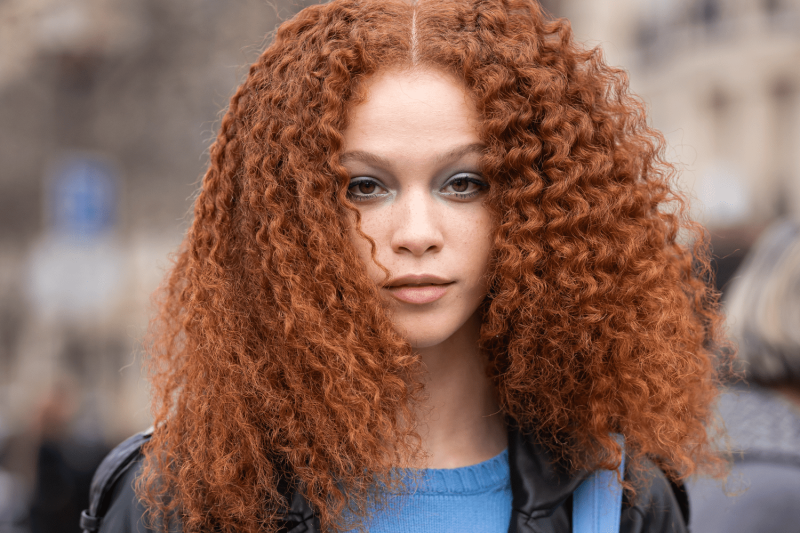Contents
Is your hair taking forever to dry? Are you frustrated by never-ending blow-drying sessions? Well, the good news is, you’re not alone—and there are plenty of steps you can take to accelerate the process.
We spoke with a few celebrity hairstylists to uncover why some hair types take so long to dry and gather their tips and tricks for speeding things up. Read on to discover the secrets behind quick-drying hair and say goodbye to those lengthy blow-dry times!
Meet the expert
- Sophie Rose Gutterman is a celebrity hairstylist. Kim Kimble is a celebrity hairstylist and natural hair educator. Irinel De Leon is a celebrity hairstylist and Dyson Global styling ambassador.
Why Do Some Hair Types Take Longer to Dry?
“There are several factors in hair structure and texture that can cause hair to take longer to dry,” says De Leon. “One of the main factors is porosity—hair with high porosity absorbs and retains more water, making it take longer to dry.” Porosity refers to how well your hair can absorb and hold moisture, and high porosity hair tends to have gaps and holes in the cuticle, allowing it to soak up water quickly and hold onto it longer.
Another significant factor is hair density. “Thicker and more densely packed hair strands take longer to dry because there is more hair to evaporate water from,” explains the stylist. Hair density refers to the number of individual strands of hair on your head, and the more strands you have, the longer it takes for the water to evaporate, simply because there’s more surface area to cover.
Texture also plays a crucial role. Curly and coily hair textures often take longer to dry than straight hair due to the shape of the hair strands, which can trap moisture. “The twists and turns of curly and coily hair create more surface area for water to cling to, making the drying process slower,” says De Leon.
The health of the hair is another important factor. Damaged or overly processed hair may absorb and hold more water. “When hair is damaged, the cuticle—the outer layer of the hair shaft—can become raised or broken, allowing more water to enter and be retained within the hair,” says De Leon. This can result from excessive heat styling, chemical treatments, or environmental factors, all of which compromise the integrity of the hair and its ability to release moisture efficiently.
How Does the Porosity of Hair Affect Drying Time?
If you’ve heard the term hair porosity but don’t truly understand what it means, let us help simplify things. Hair porosity measures how well hair can absorb and retain moisture and is determined by the condition of the hair's cuticle layer.
Hair with high porosity has raised or damaged cuticles, often due to chemical treatments, heat styling, or environmental factors. This hair type absorbs moisture quickly but also loses it just as fast. “If the hair has high porosity, it will dry quicker because it isn’t able to hold as much water,” says Gutterman.
Medium-porosity hair, also known as normal porosity, has a balanced cuticle structure that allows for efficient moisture absorption and retention. It generally dries at an average rate.
“Low porosity hair means that the hair is so tight that moisture can’t access the strand and rolls off of it,” says Kimble. “When the hair doesn’t absorb moisture well, it affects how it reacts to heat and when drying. As a result, low porosity hair tends to take longer to dry because the moisture is more difficult to evaporate.”
What Role Do Hair Care Products Play in Drying Time?
The right combination of products is crucial for reducing hair drying time. "Some hair products are designed to help hair dry faster, while others are created to protect the hair," explains Kimble. Products designed to hydrate or add shine often contain ingredients that attract and hold onto moisture, which can prolong the drying process. On the other hand, using lightweight, water-based products can help speed up drying by not weighing the hair down with additional moisture.
Understanding these factors can help you adjust your hair care routine to improve drying time, explains the hairstylist. For example, incorporating products that reduce porosity, like leave-in conditioners and serums, can help seal the hair cuticle, reducing the amount of water your hair holds. “I always recommend using a leave-in conditioner and a product with hold when drying,” adds Gutterman. “This helps maintain the style and aids in product absorption into the hair shaft, making the water evaporate more quickly. My current go-to combination is the All About Curls Bond Building Anti-Breakage Spray for heat protection. It adds lightweight moisture and holds without weighing down the hair. I also love adding Bumble and Bumble Thickening Spray—a perfect duo for an ideal blowdry!”

Does the Length and Thickness of Hair Contribute to Extended Drying Time?
Short answer: Absolutely. “Longer hair has more surface area, which means more water to evaporate,” says De Leon. “Thicker hair, especially if it's dense, has more strands, each holding water. This combination increases the overall time needed for the hair to dry completely.”
How to Dry Your Hair Faster
Our experts ensure that the right hair care practices and techniques can help speed up drying. These methods will help you save time and protect your strands from damage.
Use a Leave-In Conditioner or Detangler: “Using a leave-in conditioner or detangler can reduce drying time by smoothing the hair cuticle and minimizing tangles,” explains De Leon. These products help the water slide off the hair more easily, reducing the overall drying time. Look for lightweight formulas that won’t weigh your hair down.
Blot, Don’t Rub: Gently blotting your hair with a microfiber towel or an old T-shirt can remove excess water without causing frizz or damage. Unlike regular towels, which can be rough and create friction, microfiber towels are gentle and highly absorbent, soaking up water efficiently while preserving the hair’s natural texture. "You want to make sure you have towel dried completely before you start to dry with a blow dryer," says Gutterman.
Invest in the Right Hair Dryer: “Not all hair dryers are created equal,” says De Leon. “Investing in a high-quality dryer with advanced technology can make a significant difference in your drying time and hair health.“ The Dyson Supersonic Nural uses intelligent heat control to ensure that the hair is not exposed to extreme temperatures, reducing the risk of heat damage. Its digital motor and powerful design allow for fast drying without compromising the health of the hair. Additionally, the Dyson Supersonic Nural has various attachments that cater to different hair types and textures, making it a versatile tool for efficient and safe drying.”
Section Off Your Hair: Drying your hair in sections ensures that air reaches all parts of the hair more efficiently. Divide your hair into manageable sections using clips or hair ties, and work through each section one at a time. This technique speeds up the drying process and results in a smoother and more polished finish. "Also, prior to round brushing, if you use one, you can use your hands to rough dry the hair. Lifting it and moving it around and focusing on drying the roots first, then mid to ends, can also help speed up drying time," explains Gutterman.
Use the Correct Blow-Drying Techniques: Ensure you use a nozzle attachment to concentrate the airflow and a medium heat setting to avoid damaging your hair. Start by rough drying your hair to remove the bulk of the moisture before sectioning it for a more focused dry. For quicker results, keep the hair dryer moving constantly and maintain a consistent distance from your hair to avoid concentrating heat in one spot. Hold the dryer at a downward angle to help smooth the cuticle and enhance shine.
Utilize Heat Protectants: Applying a heat protectant spray before blow-drying can protect your hair from heat damage while aiding in faster drying. These products create a barrier that shields your hair from high temperatures and can help lock in moisture.
